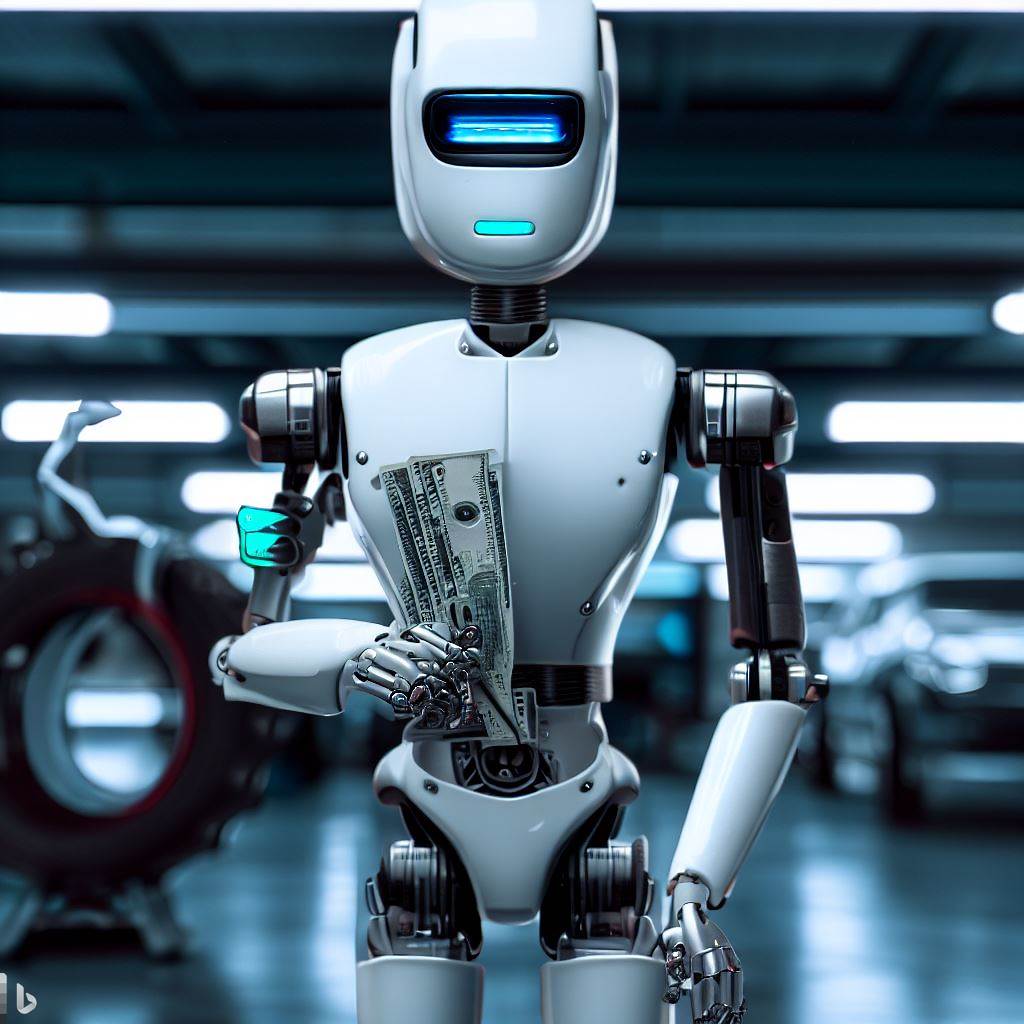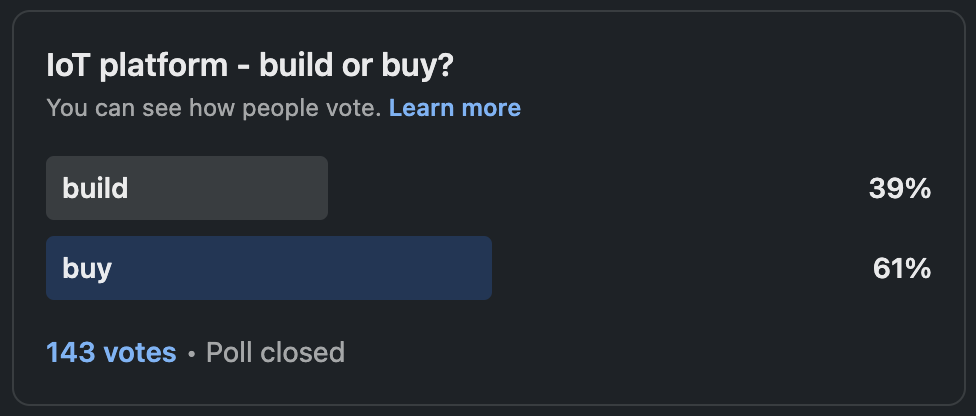
Disclaimer: I do not have any relation with Tesla. To write this post, I used publicly available information shared by Tesla (mainly from the 2023 Investor Day). This is my personal interpretation of those materials.
Buy vs. build mindset
Some time ago I created a pool on LinkedIn asking this question:
Note: Buy vs. build is a very interesting topic for me. Personally, I am a huge fan of designing and building IoT solutions. I am aware that this approach is not for everyone, so I always make sure that my personal preference does not impact my professional recommendations.
Some time ago, I created a pool on LinkedIn asking this question:

The “buy attitude” won, but there were a fair number of people voting for “build”.
Today I would like to analyze why companies like Tesla and Apple decide to “build” instead of “buy”.
Tesla approach
This topic was mentioned during the Tesla 2023 Investor Day and immediately caught my attention.
Tesla decided to build not only cars but every single piece of hardware, firmware, and backend software they use in the process. They took this approach further and built custom-designed production lines and factories.
You might ask the following question:
I'm not a Tesla, so why should I bother building infrastructure?
That approach was used not only by Tesla. Apple is another great example of a build vs. buy mindset.
You do not have to operate at a Tesla scale to benefit from building your solution.
Let’s break it down a bit.
Buying the “off-the-shelf” solution makes you start fast, for sure faster that building a custom solution.
That is a great approach if you are just starting and do not know how to operate your IoT infrastructure. The “off-the-shelf” solution will guide you by predefined processes to handle typical use cases. I think that is a good starting point - you might review those use cases and learn a lot about IoT fleet management.
At the latter stage, you can customize that “off-the-shelf” solution to meet your needs.
And here comes the bill, what made you fast in the short run, impacts your speed and efficiency in the long run.
You do not have any real control over the “off-the-shelf” solution, and building customizations over customizations is not a sustainable approach.
Tesla and Apple invested tons of time and money into full vertical integration for one reason:
providing a unique experience for the end users at the scale
Yes, I know that I am oversimplifying but let me explain my point.
Building IoT offering gives you full control of every aspect:
- design of hardware and software
- keeping consistent user experience across your ecosystem
- full visibility into your fleet during manufacturing, testing, and after the production deployment
- anonymized, real-time feedback from end users
Owning the design and build process enables you to provide a consistent user experience. Wasn’t that one of the key advantages of Tesla or Apple over their competitors?
You can respect the end users’ privacy by gathering truly anonymized telemetry data. Without spying on your customers, you can understand how they interact with your products and solutions. You will find lots of valuable insights this way, for example:
- there will be some features that are almost never used by the end users - removing those features will increase the end-user experience by simplifying your product; a simpler solution is easier to build and maintain, which reduces your cost -> you can lower the price without impacting your margins
- there will be “misused features” - which is a clear indication that your offering does not meet end-users’ needs and they found a creative way to solve that; understanding how your product is actually used gives you a huge advantage - since you own it, you can customize it to meet real-time demand
- there will be popular features that you overlooked - if something is easy to implement, we (architects, developers) typically do not see it as valuable, yet the end users do not care how easy/difficult was the implementation - they are focused on the subjective value they receive when using your product; focusing on the popular features allows you to increase the customers’ satisfaction and optimizing your resources - minimizing your costs allow for a further price reduction without any negative impact on your products
Based on my experience, custom solutions make IoT offerings fast and efficient in the long run. I agree that designing an IoT platform is not an easy task and requires a clear vision of what we are trying to achieve.
The good thing is that you do not have to build everything from the start. Tesla iteratively improves their designs and implementation, they reduce the number of off-the-shelf components in every new product. So can you!
The solid, extensible base design of your IoT offering enables incremental build without impacting efficiency. Feedback loop and Over the Air upgrades (OTA) capabilities enable constant improvement of your offering (even after production launch).
Those capabilities are limited for the “off-the-shelf” solutions, and your offering will suffer in the long run.
You do not have to be Tesla or Apple to provide a unique experience at scale. I think that is a great competitive advantage for any business.
I am biased toward building than buying solutions, but I did my best to explain my professional reasoning. Any feedback is very welcome!

